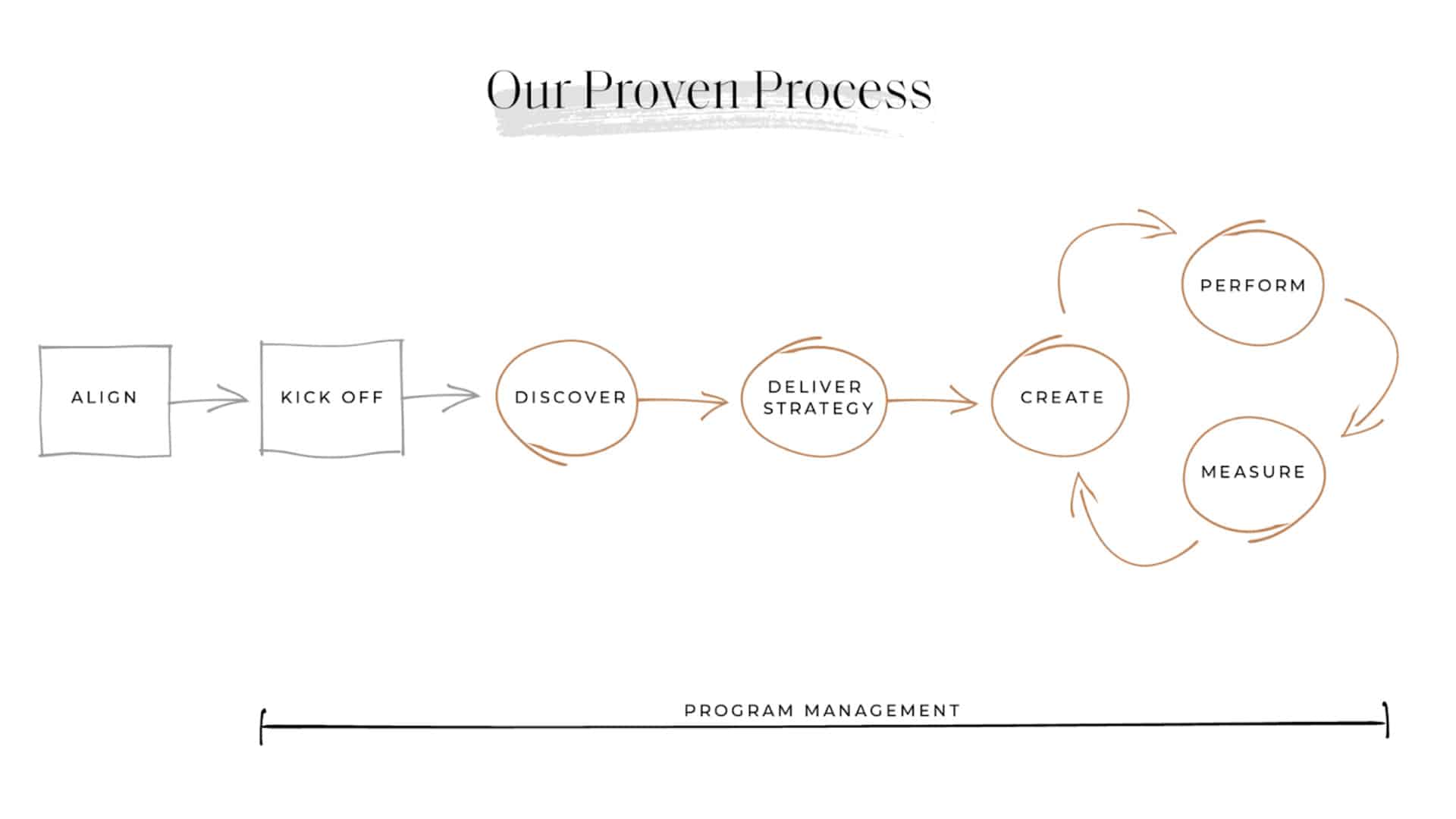You’ve made the decision to enlist external marketing support. You’ve gone through the stages of researching the available options and narrowed in on your best-fit partner — now what? How do you set your new marketing partner, and your internal team, up for success? Onboarding a marketing partner takes time, thought, and effort. It’s not as simple as a quick download on your current marketing activities, then sending your new team off to the races. Senior Project Manager Kaylee Showers shares three valuable things to consider as you ready for a the onboarding process:
- Project Velocity
- Goals Alignment
- Understanding Stakeholders
Establish The Appropriate Pace
Operational velocity is an often-overlooked, foundational element when two teams from different organizations collaborate. First and foremost along these lines, understand your pre-existing internal project speed, as it will be the baseline velocity that your new external team clips into. Know, however, that the work you do with your new partner may not always match what you have historically experienced. You need to have a shared understanding that different types of work require different timelines and resources — a brand initiative will require more input from your team and a longer timeline than spinning up a paid media campaign.
Another variable affecting pace will be the number of stakeholders involved in the project’s sign-off and approval processes. A clear lay of the land — for your team and your partner’s — provides clarity on who the main point of contact is and the best equipped individuals for specific questions or concerns (we’ll touch more on this later).
Now that you know the parties involved, how do you operate with those individuals? When it comes to exchanging information on the outset of the relationship, keep in mind how methods of communication can either accelerate — or delay — progress. Will an email be the quickest way to reach your team, or is there too much risk in these being ignored or falling through the cracks? Do you digest information better through Zoom discussion or written communication? Does your team find phone calls to be the most effective? Are texts preferred when it comes to exchanging quick information or meeting updates? As you’re onboarding this partner, nail down the preferred forms of communication for everyone involved upfront so all involved can set out on the same foot.
How To Get Your Partner Up To Speed
A marketing partner is an extension of your in-house team. Similar to onboarding new talent, their introductory period should include a run-down of:
- Company history
- Current objectives
- Economic drivers
- Previous marketing strategy
- Pain points & weaknesses
- Competitive audit
The onboarding process is a time for outside eyes and ears to assimilate before bringing new perspectives and insights to the table. At Element Three, we approach a newly found partnership with our own Proven Process. Outlined in this process are what we’ve established as appropriate touchpoints that occur when our team is initially enlisted.

Phase One: Align
This beginning stage covers all foundational bases of why your business reached out in the first place. The intention behind these conversations is to convey what’s not working in your marketing — and business at large — and discuss opportunities you’re looking to embrace a new strategic direction. What could this conversation look like? Imagine you manage the marketing department of a mid-market manufacturing company and have reached out for external marketing support. You and your chosen partner sit down. You explain, “When asking customers and our internal team about what makes us unique, we receive a dozen different answers. We have a messaging problem.”
Your partner, or perhaps prospective partner at this stage, outlines the benefits of a clearer brand message and the right framework to market it. You agree on the desired future state around clear go-to-market messaging and a brand that articulates your “why” better than it currently does. You don’t have all the underlying answers as to where the divergence in brand message occurred, and likely need more research to uncover the truth behind how we got here — that comes with discovery (more on that soon).
Phase Two: Kick Off
Now that everyone has a shared understanding of the problem at hand and overview of how you will solve together, you can get the ball rolling on specific initiatives. This phase of the process is centered around reviewing the goals you and your partner have while working together and walking through the plan of attack to reach those goals. These conversations will address what projects will look like starting out, and what success looks like at the end. The key stakeholders that will be involved throughout the project should be a part of these conversations, as clarity throughout this process is key and you don’t want information lost in translation.
Phase Three: Discover
This phase is the last stop before assembling a marketing strategy. At this point, evaluating your company’s products and services, brand experience, industry analysis, audience and consumers, and major competitors are taking place. In this phase, your internal team should have all historical, relevant marketing data and insights prepared to share. Don’t leave any rocks uncovered. Unsure if the information you have available is applicable? Share it anyways — it’s better to have too much information than not enough.
The more in-depth a partner understands your business, the less risk exists in the proposed strategy not achieving your goals. There is always risk in marketing — it’s a game of experimentation, but research and discovery helps mediate that risk and increase the probability of success. Spending everyone’s time and effort in creating the work, only to get to the end of the project and discover it didn’t quite meet your expectations, is the last thing both parties want.
Map Out Internal Stakeholders
As mentioned before, within the Kick Off phase of our Proven Process outlined above, the stakeholders within your partner and your own team are established. Why is this so important? Ensuring your marketing partner knows who they can rely on — for budget considerations, gathering consumer data, or context for past marketing decisions — leads to efficient decision-making and avoids slowed project velocity.
Who of your internal team is accountable as the main point of contact for your marketing partner? Who understands your past marketing efforts best? Which team members can field company financial questions? Operations or supply chain questions? Before you sit down to commence this new partnership, your team needs to answer these questions. Not only will it help clarify your responsibilities while working with an external partner, letting them know who to go to and when, you’ll inevitably save time and effort from endless email forwards and games of phone tag attempting to reach the right person.
If you’re looking to see real value created from marketing with a partner equipped to reach that outcome, just remember that both parties need to begin the relationship feeling confident, prepared, and aligned. Everyone involved should feel as if they’re one team working towards the same objectives. So onboard well, enter the relationship with eyes wide open, and you’ve taken the first step towards a great partnership.





